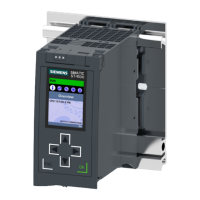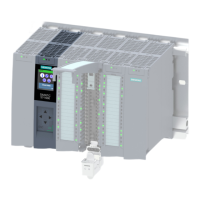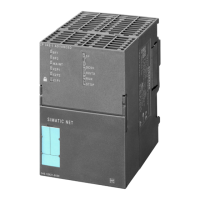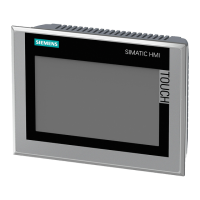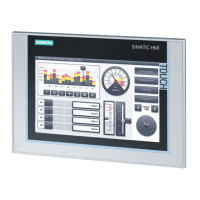Using the pulse generators of the S7-1200
7.1 High-speed counters
Easy Book
Manual, 05/2009, A5E02486774-01
83
Description Default Input Assignment Function
HSC1: Built In
or Signal Board
or monitor PTO 0
1
I0.0
I4.0
PTO 0 Pulse
I0.1
I4.1
PTO 0 Direction
I0.3
-
-
HSC2: Built In
or monitor PTO 1
1
I0.2
PTO 1 Pulse
I0.3
PTO 1 Direction
I0.1
-
HSC3:
2
Built In I0.4 I0.5 I0.7
HSC4:
3
Built In I0.6 I0.7 I0.5
HSC5:
4
Built In
or Signal Board
I1.0
I4.0
I1.1
I4.1
I1.2
-
HSC
HSC6:
5
Built In I1.3 I1.4 I1.5
- Count or Frequency Single-phase counter with internal
direction control
Clock -
Reset Count
- Count or Frequency Single-phase counter with external
direction control
Clock Direction
Reset Count
- Count or Frequency Two-phase counter with 2 clock
inputs
Clock up Clock down
Reset Count
- Count or Frequency A/B-phase quadrature counter Phase A Phase B
Phase Z Count
Mode
Monitor pulse train outputs (PTO)
1
Clock Direction - Count
1
Pulse train output monitoring always uses clock and direction. If the corresponding PTO output is configured for pulse
only, then the direction output should generally be set for positive counting.
2
HSC3 with a reset input is not possible for the CPU 1211C which supports only 6 built-in inputs.
3
HSC4 is not possible for the CPU 1211C which supports only 6 built-in inputs.
4
HSC5 is only supported by the CPU 1211C and CPU 1212C when a 2 DI/2DQ SB is installed.
5
HSC6 is not supported by the CPU 1211C or the CPU 1212C.
Accessing the current value for the HSC
The CPU stores the current value of each HSC in an input (I) address. The following table
shows the default addresses assigned to the current value for each HSC. You can change
the I address for the current value by modifying the properties of the CPU in the Device
Configuration.
High-speed counter Data type Default address
HSC1 DINT ID1000
HSC2 DINT ID1004
HSC3 DINT ID1008
HSC4 DINT ID1012
HSC5 DINT ID1016
HSC6 DINT ID1020
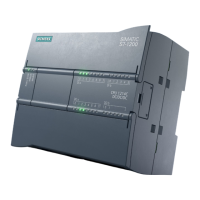
